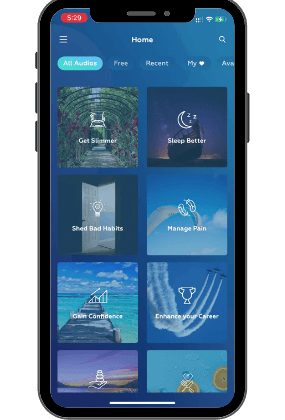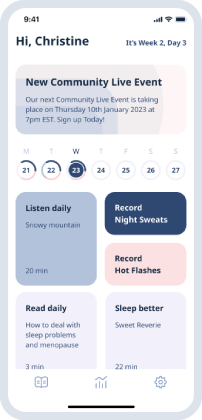
Healing through Self-Hypnosis for Low Self-Esteem

How Self-Hypnosis Can Strengthen Your Relationships
Table of Contents
Hypnotherapy is a natural therapeutic technique that people have used for years to manage everything from anxiety to pain. In the last few decades, scientists have become increasingly interested in unraveling the secrets of this powerful therapy and understanding what makes hypnotherapy work. Over time, the biggest question moved from “is being hypnotized real” to “how does hypnosis work”. Using a variety of imaging studies and tests, they are closing in on the physical changes underlying the phenomenon and helping us better understand not just what it does but how we can better harness it for our health.
Each new study brings us a little more information about the way the process can help modulate our attention and control while improving brain-body connections and transforming the way we perceive sensation, experience memories, and respond physically. Here is what you need to know about what the science behind hypnosis has uncovered.
Brain Changes during Hypnosis
Stanford scientists used brain scans to better understand just exactly what happens in the brains of people during the experience. The researchers used guided sessions similar to those used to treat pain and anxiety. They found that these sessions triggered distinct changes in three parts of the study participants’ brains, providing a clear yes answer to the question “is being hypnotized real?”
The 57 participants were scanned while resting, while recalling memories, and during two sessions. The MRI scans revealed three significant changes that took place during the therapy, including:
- Lowered activity in the salience network
- Increased connectivity between the executive control region and the insula
- Reduced connectivity between the executive control region and the default mode network
The salience network includes several important brain structures, including nodes in the amygdala, hypothalamus, and anterior cingulate and ventral anterior insular cortices. Researchers do not fully understand the salience network but believe it plays a role in our drives and urges as well as our fight-or-flight response. This network monitors the importance of outside events.
The insula is a small structure about the size of a grape that regulates various activities inside the body, including blood pressure and heart rate. The insula also helps us interpret pain.
The default mode network is a deep brain structure that is more active when you are focused not on what you are doing but on what you are thinking, for example when you are daydreaming. It is active during introspection and moments of deep thought.
Separately these changes might seem small, but together they are profound, allowing you to tune out distractions and self-conscious feelings. Your focus becomes more complete as your brain becomes better able to process and control what is happening in your body. These findings contributed to deepening our understanding of the brain’s working and making the science behind hypnosis clearer to researchers.
You too can harness the powerful brain-body connection through self-hypnosis to make transformative changes in your life and amplify your wellbeing.

Physical Changes during Self-Hypnosis
The brain changes of hypnotherapy are significant, but the phenomenon is not “all in your head,” meaning hypnosis is real. Your body experiences some pretty big changes, too. Researchers evaluating study participants’ heart rates, respiratory rates, and other vital signs found that hypnotherapy increased responses from the vagus nerve and parasympathetic activity.
The vagus nerve is a bundle of nerve fibers that extend from the brainstem to the gut and encompass most of your major organs on both sides of your body. It provides sensory information, performs essential motor functions, and plays an important role in the function of the parasympathetic nervous system.
The fight-or-flight response is also known as the stress response. The parasympathetic system, on the other hand, is the opposite. It can be considered the rest-and-restore system, putting the brakes on the fight-or-flight response by counteracting the flood of stress hormones, slowing your heart rate, and reducing your respiratory rate.
In other words, online hypnosis can help strengthen your brain-body connection to give you more tools to counteract stress, control anxiety, manage your emotions, and alleviate your fears and worries.
What You Need to Know about Hypnotherapy
If you are considering incorporating self-hypnosis into your self-care routine, you may have questions or concerns. Online hypnosis is easy to use at home via an app or download, and you can use it to address a wide range of issues, including:
- Pain management
- Stress and anxiety
- Depression
- Fears and phobias
- Anger management
- Emotional wellbeing
- Self-esteem and confidence
- Disordered eating
- Weight loss
- Smoking cessation
- Grief and bereavement
- Habit breaking
- Sexual dysfunction
- Performance enhancement
- Let go of bad habits
- Focus and concentration
- Motivation
- Women’s health issues, including fertility, morning sickness, labor pains, and hot flashes
The Science Behind Hypnosis
Approved by the American Medical Association, the American Psychological Association, and the British Medical Association, hypnosis is widely accepted and the growing body of evidence is leading to its expanded use and acceptance in medical settings around the world. You, too, can access this powerful therapy via a smartphone app, and you can use your downloads at home, at work, or when you travel. Online hypnotherapy goes where you go, and you can tap into the healing power whenever you need it. Visit UpNow.com today to learn more or to download our online hypnosis app.
UpNow Health only uses high-quality sources, including peer-reviewed articles, to support the facts within our articles. All our articles are reviewed by experts to ensure that our content is accurate, helpful, and trustworthy.
1. Terhune, D. B., Cleeremans, A., Raz, A., & Lynn, S. J. (2017). Hypnosis and top-down regulation of consciousness. Neuroscience and biobehavioral reviews, 81(Pt A), 59–74. https://doi.org/10.1016/j.neubiorev.2017.02.002
2. Mathieu Landry & Amir Raz (2015) Hypnosis and Imaging of the Living Human Brain, American Journal of Clinical Hypnosis, 57:3, 285-313, DOI: 10.1080/00029157.2014.978496
3. Center. Published: July 28, 2016. https://med.stanford.edu/news/all-news/2016/07/study-identifies-brain-areas-altered-during-hypnotic-trances.html.
4. Haggard, P., Cartledge, P., Dafydd, M., & Oakley, D. A. (2004). Anomalous control: when ‘free-will’ is not conscious. Consciousness and cognition, 13(3), 646–654. https://doi.org/10.1016/j.concog.2004.06.001
5. Terhune, D. B., & Hedman, L. (2017). Metacognition of agency is reduced in high hypnotic suggestibility. Cognition, 168, 176–181. https://doi.org/10.1016/j.cognition.2017.06.026
6. DeBenedittis, G., Cigada, M., Bianchi, A., Signorini, M. G., & Cerutti, S. (1994). Autonomic changes during hypnosis: a heart rate variability power spectrum analysis as a marker of sympatho-vagal balance. The International journal of clinical and experimental hypnosis, 42(2), 140–152. https://doi.org/10.1080/00207149408409347
7. Boselli, E., Musellec, H., Martin, L., Bernard, F., Fusco, N., Guillou, N., Hugot, P., Paqueron, X., Yven, T., & Virot, C. (2018). Effects of hypnosis on the relative parasympathetic tone assessed by ANI (Analgesia/Nociception Index) in healthy volunteers: a prospective observational study. Journal of clinical monitoring and computing, 32(3), 487–492. https://doi.org/10.1007/s10877-017-0056-5
8. Britannica, T. Editors of Encyclopaedia (Invalid Date). vagus nerve. Encyclopedia Britannica. https://www.britannica.com/science/vagus-nerve
9. CN X. vagus nerve. Loyala University Chicago. http://www.meddean.luc.edu/lumen/meded/grossanatomy/h_n/cn/cn1/cn10.htm
10. Cranial nerves. University of Washingtion. https://faculty.washington.edu/chudler/cranial.html
11. Understanding the stress response. Harvard Health Publishing. Harvard Medical School. https://www.health.harvard.edu/staying-healthy/understanding-the-stress-response
12. Default Mode Network. Science Direct. https://www.sciencedirect.com/topics/neuroscience/default-mode-network
13. William W. Seeley. The Salience Network: A Neural System for Perceiving and Responding to Homeostatic Demands. Journal of Neuroscience 11 December 2019, 39 (50) 9878-9882; DOI: 10.1523/JNEUROSCI.1138-17.2019. https://www.jneurosci.org/content/39/50/9878
14. Hermans, E. J., van Marle, H. J., Ossewaarde, L., Henckens, M. J., Qin, S., van Kesteren, M. T., Schoots, V. C., Cousijn, H., Rijpkema, M., Oostenveld, R., & Fernández, G. (2011). Stress-related noradrenergic activity prompts large-scale neural network reconfiguration. Science (New York, N.Y.), 334(6059), 1151–1153. https://doi.org/10.1126/science.1209603











